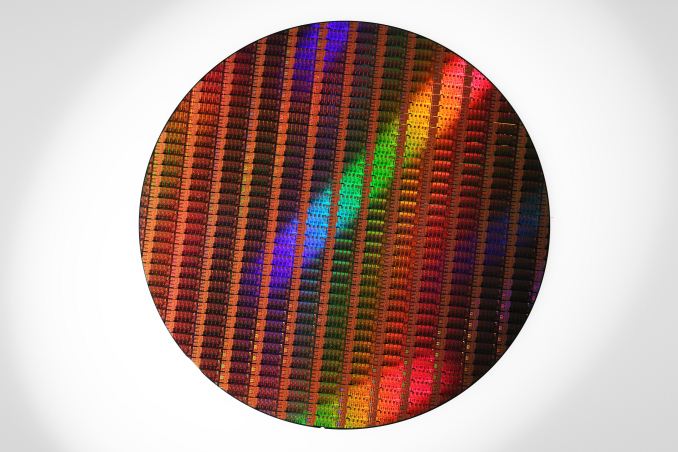The Haswell Review: Intel Core i7-4770K & i5-4670K Tested
by Anand Lal Shimpi on June 1, 2013 10:00 AM ESTFinal Words
I’m a fan of Haswell, even on the desktop. The performance gains over Ivy Bridge depend on workload, but in general you’re looking at low single digits to just under 20%. We saw great behavior in many of our FP heavy benchmarks as well as our Visual Studio compile test. If you’re upgrading from Sandy Bridge you can expect to see an average improvement just under 20%, while coming from an even older platform like Nehalem will yield closer to a 40% increase in performance at the same clocks. As always, annual upgrades are tough to justify although Haswell may be able to accomplish that in mobile.
Even on the desktop, idle power reductions are apparent both at the CPU level and at the platform level. Intel focused on reducing CPU power, and it seems like Intel's motherboard partners did the same as well. Under load Haswell can draw more power than Ivy Bridge but it typically makes up for it with better performance.
Overclockers may be disappointed at the fact that Haswell is really no more of an overclocker (on air) compared to Ivy Bridge. Given the more mobile focused nature of design, and an increased focus on eliminating wasted power, I don’t know that we’ll ever see a return to the heyday of overclocking.
If the fact that you can’t easily get tons of additional frequency headroom at marginal increase to CPU voltage is the only real downside to the platform, then I’d consider Haswell a success on the desktop. You get more performance and a better platform at roughly the same prices as Ivy Bridge a year ago. It’s not enough to convince folks who just bought a PC over the past year or two to upgrade again, but if you are upgrading from even a 3 year old machine the performance gains will be significant.











210 Comments
View All Comments
IUU - Thursday, June 6, 2013 - link
These are some very good processors. What is misplaced though is the graphics part. It is ok for mobile processors to have such a part, but for high energy consuming desktop processors, it is irrelevant and more of a burden. In the desktop world you expect a cpu with the highest possible processing power. It is 2013 and quad core is kind of old, come on intel don't be shy bring 8 and 10 core processors, you have the room to accommodate it. If I want graphics I 'll buy a monster graphics chip and will not be bothered by "optimal" power consumption.It is sad to see the energy efficiency and the computing efficiency improving only to accommodate a miserable graphics card. If you want us to buy graphics together with the cpu(an apu) make a chip with a tdp 300-400 because this is a mainstream energy budget for the desktop.
If it is impractical(which is probably the case) build your own discrete graphics.
Don't vandalize your cpus this way. If you want the mobile go for it, just don't contaminate your desktop products.
desky - Saturday, June 8, 2013 - link
same with me!I'm currently running an E8400@4,5GHz since 2008, and now seems a good time to upgrade.
I hope the haswell chip will overclock just as good. From what I've read that means that I may have to exchange the thermal paste under the IHS for some coolaboratory stuff...
Not decided on i5 or i7 yet though...
cmdrdredd - Monday, June 3, 2013 - link
You shouldn't have expected a reason to upgrade yet. Sheesh...we knew it would not be a real upgrade over an SB or IB CPU.peckiro - Monday, June 3, 2013 - link
I built a new from the case up Z77 rig with a 3570K processor running 24/7 @ 4.4GHz last fall. I seriously considered waiting for Haswell to hit the market before upgrading my machine (circa 2007). I'm glad I didn't wait any longer since, I have been running a damned fast machine for 8 months now. I think I may have felt perhaps a little bit underwhelmed if I had waited for Haswell. Just my 2 cents worth.cmdrdredd - Monday, June 3, 2013 - link
Yep...I built up my current 3570k system around the summer last yearyearkaiserreich - Saturday, June 1, 2013 - link
While you are right that load power consumption is higher, the system is not loaded all the time.Not for the common users any way. In that case, idle will serve as a better power performance indicator as opposed to load consumption.
tential - Saturday, June 1, 2013 - link
Pulling up this website and browsing my CPU utilization is under 20% and under 10-5% the majority of the time. Now I'm 5 years back on a Core2Duo. I'd imagine by now, if I was browsing this page on a Haswell, it'd be even lower considering processors are much faster as well. So mobile side I'm guessing that average battery life increased quite a bit. We'll see with the review. Using LOAD power consumption to judge mobile though is just plain ignorant.This is why some people need to stick to reading reviews, and wait for full reviews come out, rather than jumping to early conclusions and misinterpreting information.
t.s - Sunday, June 2, 2013 - link
So, what about people that want to gaming on laptop?takeship - Sunday, June 2, 2013 - link
Did you realize that these are all desktop chips? Let's not judge using desktop parts. But seriously, what percentage of users game with a mobile quad core & intel graphics?krumme - Saturday, June 1, 2013 - link
5-10% is on the positive side imho.http://www.guru3d.com/articles_pages/core_i7_4770k...
Sometimes it can even be slower :)
This processor is not intented for desktop. There is nothing wrong in that. But why all this bs covering it. Its a fine processor and a weird and shallow review.